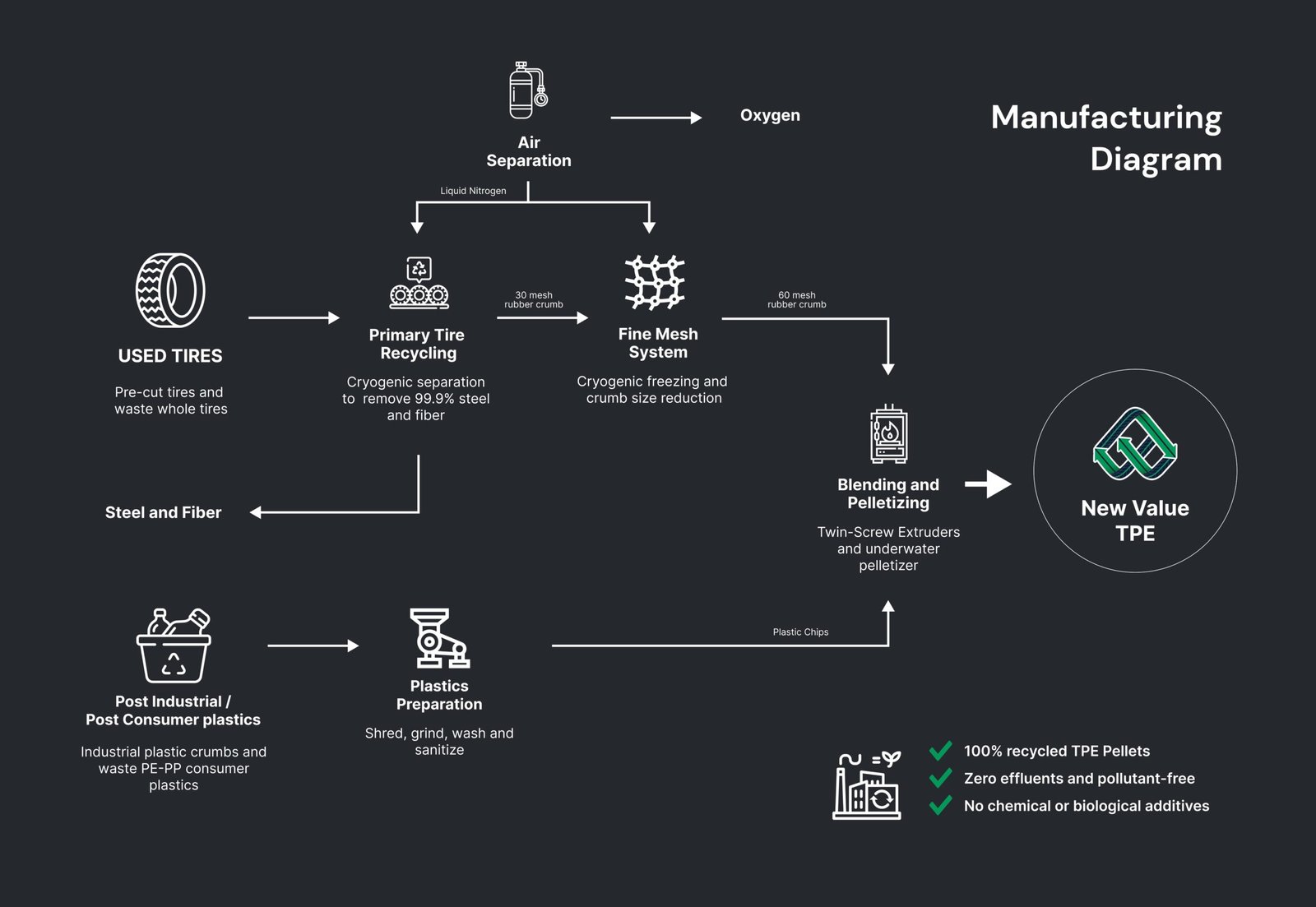The process begins with the collection of end-of-life tires. These tires are then subjected to a shredding stage, breaking them down into manageable pieces. Advanced shredding technology ensures an efficient and uniform breakdown of the tire components.
Debeading is a critical step specific to tire recycling. It involves the removal of the bead, the inner circumference of the tire that connects to the rim. This process ensures that the subsequent stages focus on the rubber content of the tires, maximizing the material's utility.
Following debeading, the shredded tire components undergo a grinding process. This stage further reduces the size of the material, creating a finer and more uniform rubber powder. Grinding is instrumental in preparing the rubber for subsequent blending and extrusion.
The ground rubber undergoes a mixing and blending stage, where it is combined with other additives to enhance the properties of the TPE. These additives may include recycled Polypropylene (PP), High-density Polyethylene (HDPE), or other materials, creating a balanced blend that contributes to the final characteristics of the TPE.
The blended material is then subjected to extrusion, a process where it is heated and forced through a die to create a continuous profile or shape. This stage imparts the desired form to the TPE, allowing for versatility in its application.
The extruded material is pelletized, transforming it into small, uniform TPE pellets. Pelletizing is crucial for ease of handling, transportation, and storage. The pellets can be customized to meet specific size requirements for different applications.
Quality control measures are integrated throughout the manufacturing process. Testing protocols ensure that the TPE pellets meet stringent standards for elasticity, tensile strength, and other performance characteristics. Any deviations are identified and addressed to maintain the quality of the final product.
The final TPE pellets are packaged using specialized equipment to ensure convenience and protection during transportation and storage. Packaging materials may be chosen with sustainability in mind, aligning with the overall environmentally conscious approach of the TPE manufacturing process.

The comprehensive TPE manufacturing process, rooted in tire recycling, showcases a commitment to sustainable practices, resource conservation, and the creation of high-quality materials. By transforming end-of-life tires into versatile TPE pellets, this process embodies a circular economy ethos, contributing to a greener and more sustainable future.
We want to hear from you
163 Ryder Lane,
Callaway, Florida, USA
+1(281) 636-1306
info@nvtpe.com